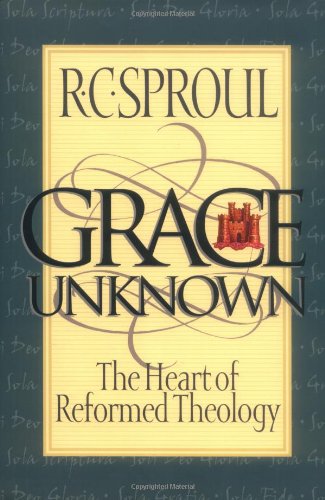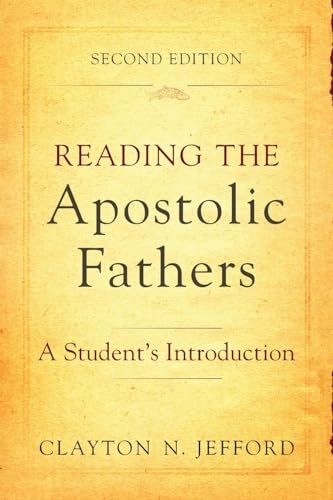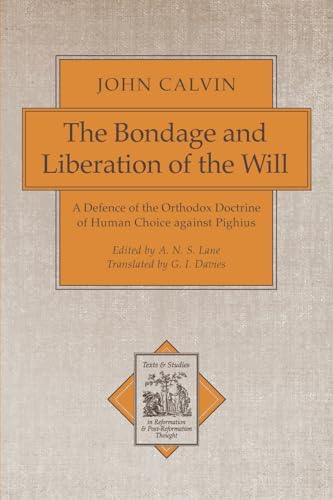Paul’s Letter to the Philippians
Written by Gordon D Fee Reviewed By Ben Witherington IIIThis commentary is indeed what one has come to expect from as fine a NT scholar as Gordon Fee—a first rate piece of research, painstaking attention to detail, passionate argumentation, thorough coverage of most all of the exegetical and theological issues the text raises, sensitivity to issues of how the letter fits into the larger Pauline corpus, a work written with a pastor’s heart and with pastoral tasks in mind. I suspect that if Paul himself could read this work he would be pleased with both its spirit and substance at point after point, for it often gets at the heart of the matter, and seldom fails to grasp the nettle when there is a thorny issue involved. Furthermore, the readers of Themelios will find it a most congenial work for it takes traditional or ‘evangelical’ positions on the authorship (Pauline), date (about 62), provenance (Rome), and integrity of the letter. This is not a work that will make conservative pastors or Bible students wonder or worry about what their scholarly evangelical mentors are up to. It is in most respects a good old-fashioned commentary, rightly more concerned with what is true than what is new, with what is probably than what is possible. Having said all this, a few more detailed comments, both by way of critique and of commendation are in order.
Commenting on books of the NT has changed somewhat over the last two decades, especially in response to the increasing Biblical illiteracy of both the church and the world, and the increasing lack of knowledge of or facility with the biblical languages among both seminary students and pastors. The recent formatting changes in the NICNT commentary series reflect these trends in that there has been a concentrated effort to leave technical discussion (and use of the languages) to the footnotes so the text will be more user-friendly for a wider audience. Some effort has also been made to change the design of the NICNT series so that the commentaries will lie open on one’s desk while being used. The former change has been much more successfully implemented than the later cf. Fee’s earlier volume on 1 Corinthians to this one), to judge from this writer’s own copy of Fee’s Philippians which continues to close itself except when opened in the very middle.
Fee’s basic view is that Philippians, unlike other Pauline letters except 1 Thessalonians, is an example of a hortatory friendship letter. That the letter involves exhortation to Philippians, no one would dispute, but whether it matches up well with the ‘friendship’ letter conventions may be doubted. As I have pointed out in my own Philippians commentary (Friendship and Finances in Philippi, Trinity Press, 1994, pp. 118–21), the Greek term for friends, philia, is lacking in this letter, and instead what we have is family language about ‘brothers’ ‘slaves’ and the like. Secondly, there are clear markers in the text that Paul does not view his relationships with the Philippians as one involving absolute parity. His call to his converts to follow the examples of himself, his co-workers, and of course Christ suggests some sort of hierarchical relationship, with Paul being the spiritual mentor or parent of the Philippians. Partnership, not absolute parity in a ‘friendship’ relationship, is what the letter suggests.
Fee is quite right to doubt that there are ‘opponents’ that are currently vexing the Philippians, if by opponents one means Judaizers such as caused trouble in Galatia, or other sorts of Jewish or Christian troublemakers. As Fee says, the general problems caused by living in a Roman colony sworn to recognise the Emperor (Nero) as Lord and Saviour can easily account for any suffering the Philippians may have encountered, without conjuring up Christian or Jewish opponents to plague the Philippians at the time this letter was written. On the other hand. Fee tends to underplay the internal tensions that existed in the Philippian congregations.
It is not to the point to stress that Paul has cordial relationships with the recipients of this letter. This is true enough, but the letter indicates that differences and rivalries of some sort existed between members of the Philippian congregation (cf. 4:1–2). Clearly the problems have not reached Corinthian proportions, but they are not minimal as Philippians 1 and 4 make especially clear. What Paul is doing in Philippians is presenting a deliberative argument for concord in the community, not merely writing a hortatory friendship letter. This latter genre classification does not satisfactorily account for the forms of persuasions we find in this letter, and the reason the arguments are pursued in the manner they are.
Fee’s arguments for the Roman (and so later) provenances are strong ones, and his critiques of the Caesarean and Ephesian hypotheses are telling. The best explanation of the references to the whole Praetorium and Caesar’s household in Philippians remain that Paul is under house arrest in Rome. Equally telling is his critique of various partition theories which fail to note the various themes and motifs and development of arguments which tie this whole letter together. Further, his exposition of Euodia and Syntyche (cf. pp. 388–92) is very helpful, for these two women were indeed Paul’s co-workers, leaders in the congregation in Philippi. This is why Paul must address their disagreements directly, for they were setting the opposite sort of example to that which Paul had in mind. Rivalries and disputes must be dealt with if concord was to exist in the Philippian congregation.
Fee is never reluctant to swim up stream if he is convinced a view is wrong-headed or misguided. He devotes a special section to the proposal that what we have in Philippians 2:6–11 is not a hymn but merely exalted prose that Paul has penned (see pp. 40–46 for a summary). What is refreshing about this argument is that Fee is right that whatever his sources, Paul owns and adapts all that he borrows, such that the material in its present form is ‘Pauline’ material, serving the larger purposes of his epistle. It is not some hymnic meteorite that fell from the sky landing awkwardly where we find it. What is not convincing about Fee’s argument is that we may neglect the obvious parallels between this hymnic piece and other similar pieces in John 1, Hebrews 1, and Colossians 1 all of which are indebted to what was said in early Judaism about personified Wisdom. In particular the V pattern (pre-existence, earthly existence, return to Heaven) is clearly documented in earlier poetic Wisdom material, and in some ways Philippians 2 is the clearest example of this indebtedness (cf. my Jesus the Sage on the hymns). Fee urges on us an either-or (either it’s a pre-Pauline hymn or it’s Pauline), when in reality it is a situation of both-and: 1) yes this material was likely part of an early Christian hymn before Paul ever wrote this letter; 2) no, this does not mean that we may neglect the way Paul has adopted and adapted this material, making it his own and making it serve the larger rhetorical and ethical purposes of this letter (in particular the appeal to follow good examples).
In addition to the critiques listed above, we may add that more attention needed to be given to the rhetorical character and direction of Paul’s arguments (e.g. 1:27–30 is the basic thesis statement [propositio] of the whole letter, not the first of various arguments). Fee is basically sceptical about applying the various parts of a rhetorical speech to the letter as a whole, but these surely go a good deal further in explaining the letter than the hortatory friendship model.
None of the criticisms listed about is meant to detract from my basic judgement offered earlier in this review, that this is a first rate commentary, indeed the best detailed commentary on the Greek text currently available. No one commentary can be all things to all persons, but this one should serve many persons and purposes well for a long time to come.
Ben Witherington III
Asbury Theological Seminary







